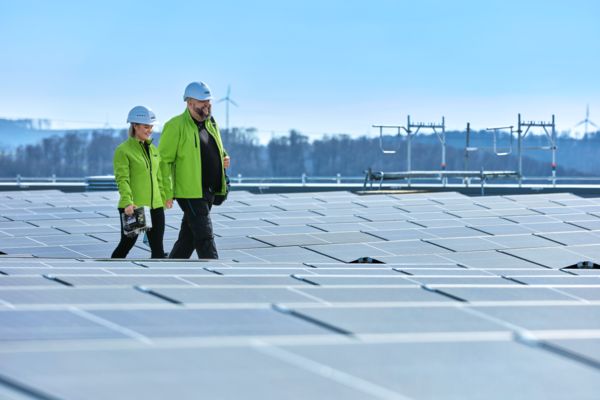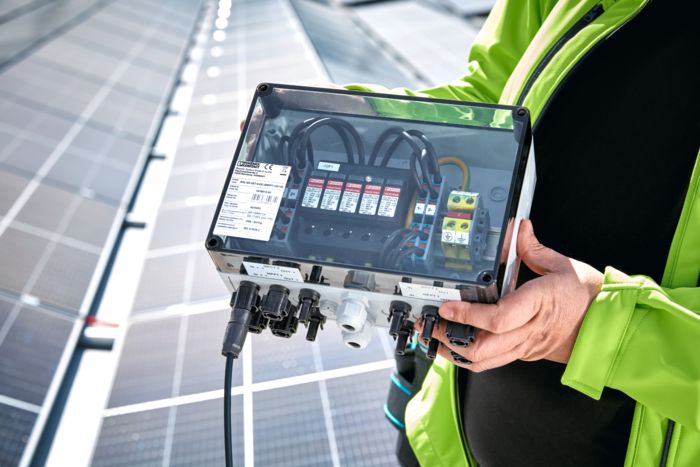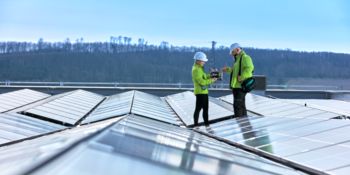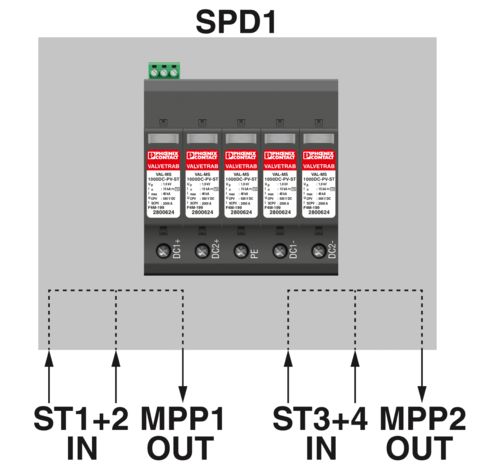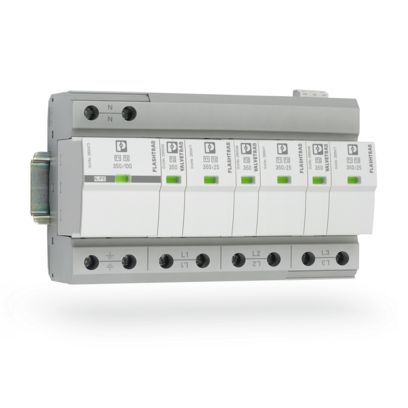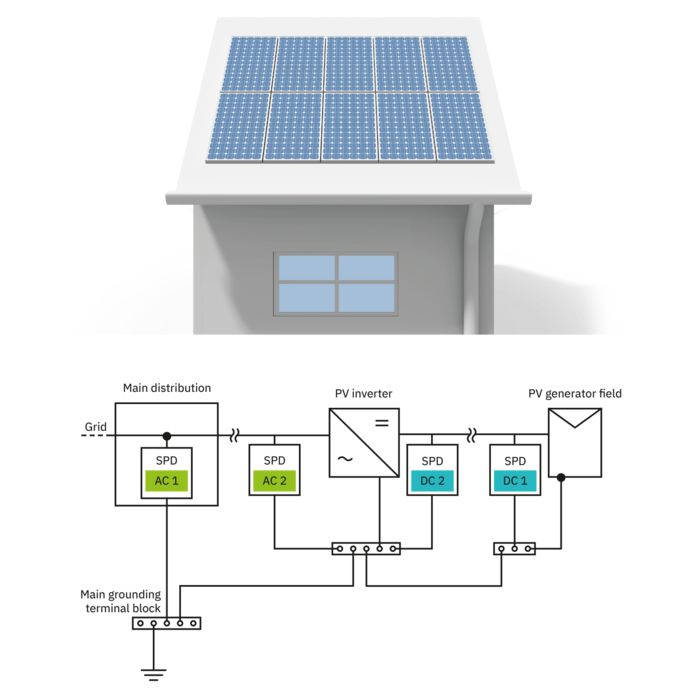
- Installation location DC 2 DC surge protection in the vicinity of the PV panels: type 2 surge protective devices
- Installation location DC 1 DC surge protection in the vicinity of the inverter: type 2 surge protective devices, if the cable length between DC 1 and inverter is >10 m
- Installation location AC 2 AC surge protection on the AC side of the inverter: type 2 surge protective devices, if the cable length between AC 1 and AC 2 is >10 m
- Installation location AC 1 AC surge protection in the main distribution: type 2 surge protective devices

